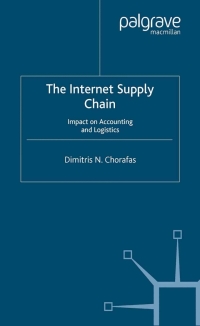Question
A-Return on equity increases or decreases through bond financing. True False B-On January 1, a company issued and sold a $400,000, 7%, 10-year bond payable,
A-Return on equity increases or decreases through bond financing.
True
False
B-On January 1, a company issued and sold a $400,000, 7%, 10-year bond payable, and received proceeds of $396,000. Interest is payable each June 30 and December 31. The company uses the straight-line method to amortize the discount. The journal entry to record the first interest payment is:
| a. | Debit Bond Interest Expense $13,800; debit Discount on Bonds Payable $200; credit Cash $14,000 | |
| b. | Debit Bond Interest Expense $28,000; credit Cash $28,000 | |
| c. | Debit Bond Interest Expense $14,200; credit Cash $14,000; credit Discount on Bonds Payable $200 | |
| d. | Debit Bond Interest Expense $14,000; debit Discount on Bonds Payable $200; credit Cash $14,200 |
C-On January 1, Alpha Corporation issued and sold $400,000, 7%, 10-year bond payable, and received proceeds of $396,000. Interest is paid semiannually. The company uses the straight-line method to amortize the discount. What amount of discount should be amortized every period?
| a. | $200. | |
| b. | None of the above. | |
| c. | $400. | |
| d. | $4,000. |
D-On January 1, a company issued a $501,000, 10%, 8-year bond payable, and received proceeds of $487,000. Interest is payable each June 30 and December 31. The company uses the straight-line method to amortize the discount. The amount of discount amortized each period is $875.
True
False
Step by Step Solution
There are 3 Steps involved in it
Step: 1

Get Instant Access to Expert-Tailored Solutions
See step-by-step solutions with expert insights and AI powered tools for academic success
Step: 2

Step: 3

Ace Your Homework with AI
Get the answers you need in no time with our AI-driven, step-by-step assistance
Get Started


